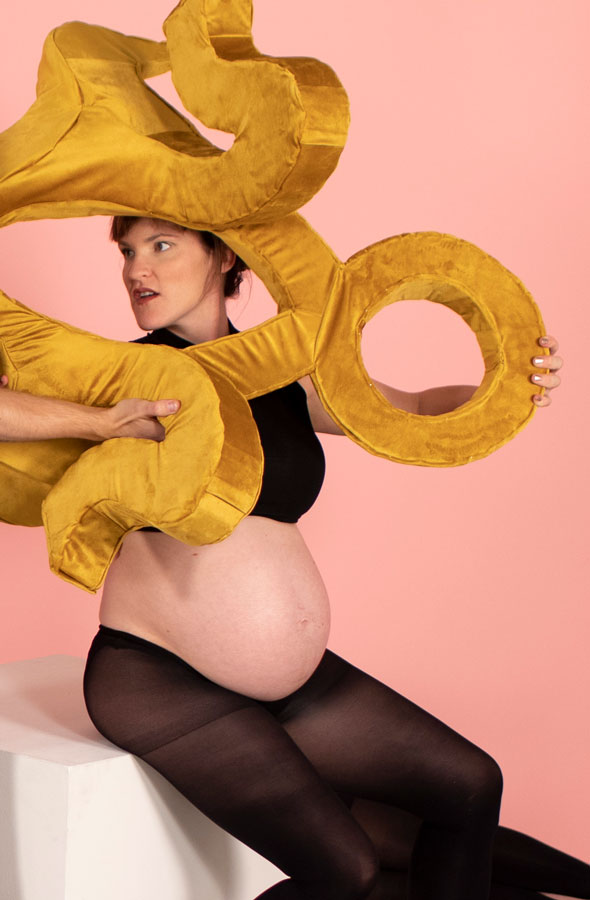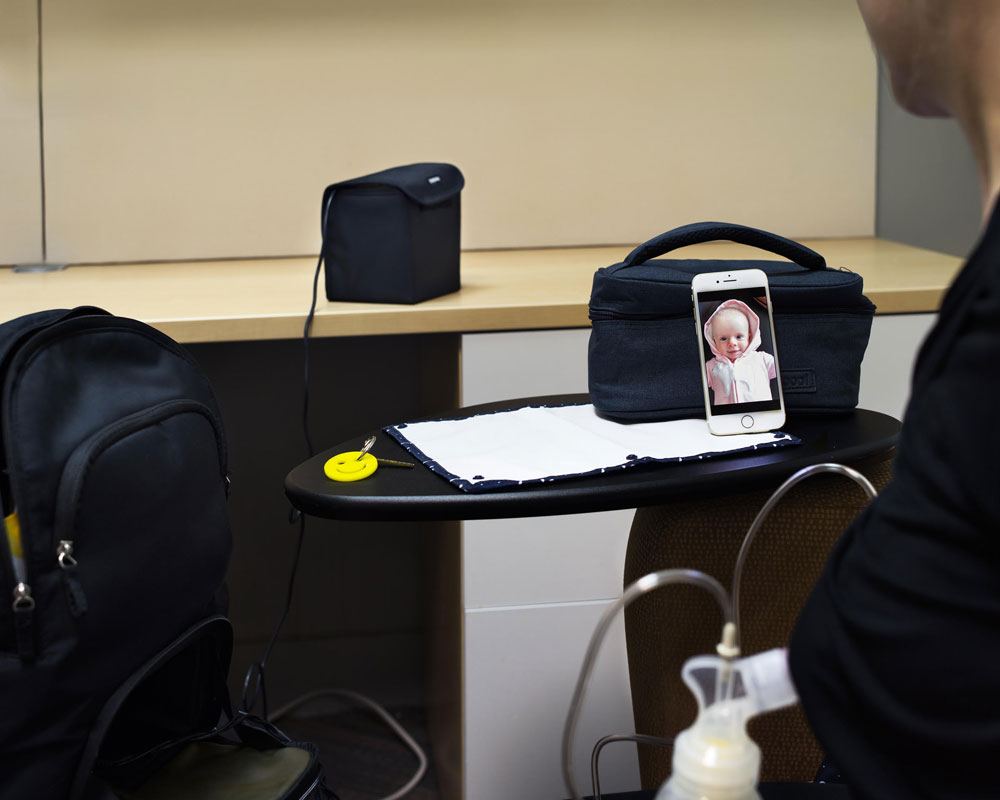F.7 Mother Where Art Thou: Contemporary Representations of Motherhood in Photography
Sat Oct 17 / 9:00 – 10:30
voice_chat expiredchairs /
- Dominique Rey, University of Manitoba
- Sarah Ciurysek, University of Manitoba
Whereas historical representations have typically defined the role of the mother through an idealized lens, depictions of motherhood today are not easily classifiable. From the myriad forms of self-representation that abound in social media, to provocative and critically informed photographic images produced by artists, the parameters defining motherhood are being blown apart. In these disparate images what is revealed ranges from the celebratory to the traumatic, the messy to the revelatory. In Home Truths: Photography and Motherhood, Susan Bright writes: “Like photography itself, the expectations of motherhood are in flux; both subject and medium grapple for new meaning in a changing world.” What is consistent is the refusal of an essentialist perspective, that previously relegated the subject of motherhood to a fringe and marginal discourse, thereby reclaiming narratives of motherhood that are relatable, ambiguous, and generative.
Dominique Rey is a multidisciplinary artist whose work delves into peripheral subjectivities, from individuals and groups of people on the margins of dominant culture, to performance-based works that mine the terrain of the unconscious. She has exhibited across Canada, the United States, and Europe, including MOCCA (Toronto), Remai Modern (Saskatoon), MacLaren Art Centre (Barrie), Plug In ICA (Winnipeg), Gallery TPW (Toronto), Southern Alberta Art Gallery (Lethbridge), Centre Clark (Montreal), Tabacka Art Center (Kosice, Slovakia), Galleri Box (Goteborg, Sweden), and Art Center/South Florida (Miami Beach). Her art appears in numerous collections, including the National Gallery of Canada, Winnipeg Art Gallery, Scotiabank, and Province of Manitoba. She holds a MFA from Bard College (NY) and a MFA from the Transart Institute (Berlin). Dominique Rey was awarded the Canada Council for the Arts residency at the Cité Internationale des Arts in Paris in 2016. She is an Associate Professor at the School of Art at the University of Manitoba.
Sarah Ciurysek is a Canadian artist who uses photography and its intersection with other mediums to explore the relationships we have with the ground. Soil figures prominently in works that reference graves, voids, and death, as well as the life-giving components of the earth. Sarah’s work has been exhibited across Canada, in the United Kingdom and South Africa, and recently at Schleifmühlgasse 12- 14, Vienna. She has completed residencies at Textilsetur, Iceland and Frans Masereel Centrum, Belgium, and a commission for the 2015 United Nations Year of Soils in the UK. Sarah lives in Winnipeg, where she is an Associate Professor at the School of Art.

Video Still from The Laboratory of Spatial Bemusement (Tia Halliday & Megan Dyck) an ongoing video and performance project 2018-Present. Performer Pictured: Tia Halliday. spatialbemusement.com
F.7.1 The Art of Preoccupation: Artists’ Self-Representation of Pregnancy
Tia Halliday, University of Calgary
Self-representations of pregnancy on behalf of artists, raise many questions about the role of gender, economic class, equity, and labor within the Art world. Canadian artist Kim Waldron’s Public Office campaign and photography project (2014 – 2016), reveals the problematic politics surrounding expectant women artists and creative persons who experience pregnancy. With notable effects on performance artists, photographers, and others whose primary practice includes the use of one’s own body as creative subject, pregnancy’s complex subjecthood is coded as a visual signification of preoccupation; the labor of growing and gestating human life. So what does the art of preoccupation (making when we are already making) tell us about commonly-held beliefs surrounding expecting artists? What implicit beliefs surrounding work and labor production are held by viewers of pregnant bodies and how are these complexities revealed in the work of pregnant artists? This presentation will survey the self-representation of artist who experienced pregnancy, many of whom took up the process and experience as subject matter within their work. Positioned as a purposeful and fleeting opportunity to ask questions about the politics of the reproducing body, or as the collateral subject matter resulting from a pregnant artist’s desire to simply get to work, the self-representations of pregnant artists provide valuable insight into the position of reproducing persons within both the art and greater community.
Tia Halliday is a tenure-track instructor of visual art and theory at the Department of Art, University of Calgary. Halliday received a BFA in distinction from the Alberta University of the Arts, attended the School of the Art Institute of Chicago, obtained an MFA from Concordia University and is also currently a PhD student at the Werklund School of Education at the University of Calgary with a focus on representations of gender in contemporary art and education. Halliday’s recent exhibition record includes Second Skin (2018, Glenbow Museum, Calgary, curated by Sarah Todd) and the Alberta Biennial of Contemporary Art (2017). Her work has been highlighted in The Globe and Mail, The Washington Post, Frieze, Canadian Art and others. Halliday has also grown a human body within her own.
F.7.2 Making the Virgin Mary Speak: Motherhood and Christian Iconography / Faire parler la Madone: Maternité et iconographie chrétienne
Nathalie Dietschy, University of Lausanne
While the theme of motherhood in art has been interpreted in many different ways, Western representations of motherhood are still influenced by Christian iconography and the canonical image of the Virgin Mary (Verdon, 2005), leaving archetypal pictures of the mother and the relationship to her child that persist today. The photographic portraiture of pregnant Beyonce by Awol Erizku in 2017 showed for example the international star as a Madonna. However, these iconographic formulas inherited from the Christian tradition are questioned and criticized by contemporary artists and more specifically by women artists, directly concerned. They reappropriate Christian motifs (Annunciation, Virgin and Child, pietà, ...) and include them in a secular setting, outside of churches. Inscribed in the personal journey of the artist, these versions, which resort to tradition but are anchored in the present, very often make the Madonna speak. While in the Gospels the Virgin Mary is a silent figure (she speaks only four times), and her iconography, inspired by the Bible, makes her a mother of purity, with a hieratic, tender or nurturing attitude, her voice carries that of the artist in contemporary revisits. Like Her son, Christ who, as we have shown elsewhere, is no longer just an alter ego of the artist, but a spokesman, the figure of the Virgin Mary is used to embody a discourse, a militant position on women and their role as mothers. We wish to reflect upon the impact of Christian iconography in picturing maternity in contemporary photography by analyzing several key examples that explore Christian themes in a secular setting in order to discuss main issues related to motherhood such as infertility, motherhood for lesbian women, medically assisted pregnancy, adoption, or breastfeeding.
Nathalie Dietschy is Assistant Professor at the Dep. of Art History at the University of Lausanne. She is the author of several papers on the representations of Christian themes in contemporary art and photography and is the author of Le Christ au miroir de la photographie contemporaine (Alphil, 2014) and The Figure of Christ in Contemporary Photography (Reaktion Books, 2020). She is the editor of Jésus en représentations (Infolio, 2011) and Le Christ réenvisagé (Infolio, 2016). She has been an Associate curator at the Foundation for the Exhibition of Photography (FEP) and an art critic for the Swiss public radio station (RTS).

Corinne May Botz, Building Manager from the series Milk Factory, Archival Pigment Print, exhibition size 40" x 50", 2019.
F.7.3 Milk Factory
Corinne Botz, John Jay College of Criminal Justice (CUNY)
The focus of Milk Factory, the subject of this proposal, is the visualization of lactation rooms. Seldom is any space simultaneously so utilitarian and emotionally charged. Lactation rooms embody deeply felt, subjective experiences of motherhood. Symbolically and materially, expressed milk simulates physical and emotional intimacy when mother and child are separated. These little-known and commonly unseen interiors offer insight into women’s personal experiences, the maternal body’s status in the workplace, and fundamental socio-political issues pertaining to the family.
Milk Factory originated as a personal record of my early experience as a mother after I gave birth to my daughter and took a photograph of the oddly sparse room I pumped in at the College where I teach. A few years later, realizing the relationship of this image to my other work as an exploration of space, I decided to expand the project to create an unconventional portrait of motherhood. The arbitrary quality of many rooms designated for the purpose of lactation points to the tenuous position new mothers inhabit in the workforce. Any investigation of lactation rooms must acknowledge the absence of policy for mandated paid maternity leave in America. Through my images I endeavor to help normalize pumping, create a public discourse concerning the politics of care, and highlight the importance of women’s voices/visibility. The photographs are named for the diverse professions of the pumping women. While pumping can enable women to have more autonomy, accelerating reentry to the workplace soon after childbirth, it also erases the intimacy of breastfeeding and bodily contact. My images of lactation rooms reflect some of the ideological contradictions inherent in modern parenthood and public policies. The solitary pumping rooms take on collective power through the accumulation of photographs.
Corinne May Botz is a Brooklyn-based artist and educator whose work engages with themes including space, gender, trauma and the body. Her published books combining photography and writing include The Nutshell Studies of Unexplained Death (Monacelli Press, 2004) and Haunted Houses (Monacelli Press, 2010). Botz’s photographs have been internationally exhibited at such institutions as the Brooklyn Museum; Museum of Contemporary Photography; De Appel; Turner Contemporary; Bellwether Gallery; and Benrubi Gallery. Her work has been reviewed in numerous publications such as The New York Times, The New Yorker, Foam Magazine, Hyperallergic, and Bookforum. She has held residencies at Skowhegan School of Painting and Sculpture; Atlantic Center for the Arts; Akademie Schloss Solitude; Lower Manhattan Cultural Council and Mana Contemporary. Botz is the recipient of both the New York Foundation for the Arts and the Jerome Foundation grants. Botz is represented by Benrubi Gallery in NYC.



